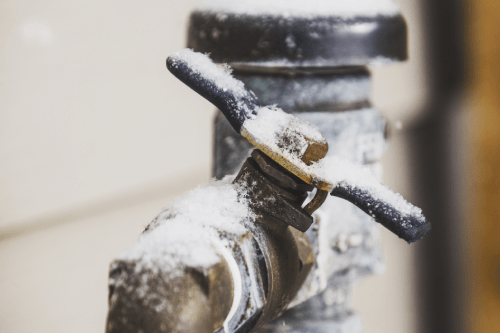The article author is making a few good annotation related to How to prepare your home plumbing for winter weather as a whole in this post further down.

Cold weather can wreak havoc on your plumbing, specifically by freezing pipes. Right here's just how to stop it from occurring and what to do if it does.
Intro
As temperatures decrease, the danger of icy pipes boosts, possibly bring about pricey repairs and water damage. Comprehending exactly how to stop icy pipelines is essential for homeowners in cool environments.
Understanding Icy Pipelines
What creates pipelines to freeze?
Pipes freeze when revealed to temperatures listed below 32 ° F (0 ° C) for expanded durations. As water inside the pipelines freezes, it expands, taxing the pipeline walls and possibly triggering them to burst.
Risks and damages
Frozen pipes can result in water system disruptions, building damages, and pricey repair work. Burst pipelines can flood homes and cause considerable architectural damages.
Signs of Frozen Piping
Recognizing icy pipes early can prevent them from breaking.
Just how to identify frozen pipelines
Try to find lowered water flow from faucets, uncommon smells or sounds from pipes, and noticeable frost on revealed pipes.
Prevention Tips
Protecting at risk pipes
Wrap pipes in insulation sleeves or make use of heat tape to shield them from freezing temperatures. Focus on pipes in unheated or external areas of the home.
Home heating techniques
Keep interior spaces appropriately warmed, specifically areas with plumbing. Open closet doors to enable cozy air to flow around pipes under sinks.
Safeguarding Exterior Plumbing
Garden pipes and exterior taps
Separate and drain pipes garden pipes before winter months. Set up frost-proof spigots or cover outside taps with protected caps.
What to Do If Your Pipelines Freeze
Immediate activities to take
If you believe icy pipes, maintain taps open to relieve stress as the ice melts. Utilize a hairdryer or towels soaked in warm water to thaw pipelines slowly.
Long-Term Solutions
Structural adjustments
Take into consideration rerouting pipelines away from outside wall surfaces or unheated areas. Include additional insulation to attics, cellars, and crawl spaces.
Updating insulation
Buy high-grade insulation for pipes, attics, and wall surfaces. Proper insulation aids preserve consistent temperatures and lowers the risk of frozen pipelines.
Conclusion
Stopping frozen pipelines requires positive steps and quick actions. By recognizing the causes, indicators, and safety nets, homeowners can secure their pipes during cold weather.
6 Proven Ways to Prevent Frozen Pipes and Protect Your Home
Disconnect and Drain Garden Hoses
Before winter arrives, start by disconnecting your garden hoses and draining any remaining water. Close the shut-off valves that supply outdoor hose bibs and leave the outdoor faucet open to allow any residual water to drain. For extra protection, consider using faucet covers throughout the colder months. It’s also important to drain water from any sprinkler supply lines following the manufacturer’s directions.
Insulate Exposed Pipes
Insulating your pipes is an effective way to prevent freezing. Pipe insulation is readily available at home improvement stores and is relatively inexpensive. Pay close attention to pipes in unheated areas such as the attic, basement, crawl spaces, or garage. Apply foam insulation generously to create a buffer against the cold. You can also wrap your pipes in heat tape or thermostat-controlled heat cables for added warmth.
Seal Air Leaks
Inspect your home for any cracks or openings that could let in cold air. Seal any holes around the piping in interior or exterior walls, as well as the sill plates where your home rests on its foundation. Additionally, make sure to keep your garage door closed unless you’re entering or exiting. Leaving it open creates a significant air leak that can lead to frozen pipes.
Allow Warm Air Circulation
During cold snaps, it’s essential to allow warm air to circulate evenly throughout your home. Leave interior doors ajar to promote better airflow. Open kitchen and bathroom cabinets to help distribute heat consistently around the rooms. If you have small children or pets, be sure to remove any household chemicals or potentially harmful cleaners from open cabinets for safety.
Let Faucets Drip
A small trickle of water can make a big difference in preventing ice formation inside your pipes. When temperatures drop significantly, start a drip of water from all faucets served by exposed pipes. This continuous flow helps prevent the water from freezing. Additionally, running a few faucets slightly can relieve pressure inside the pipes, reducing the chances of a rupture if the water inside does freeze.
https://choateshvac.com/6-proven-ways-to-prevent-frozen-pipes-and-protect-your-home/

I hope you enjoyed reading our article about 6 Ways to Prevent Frozen Pipes. Thanks for taking time to browse our short article. In case you appreciated our blog posting please consider to share it. I value your readership.
Information